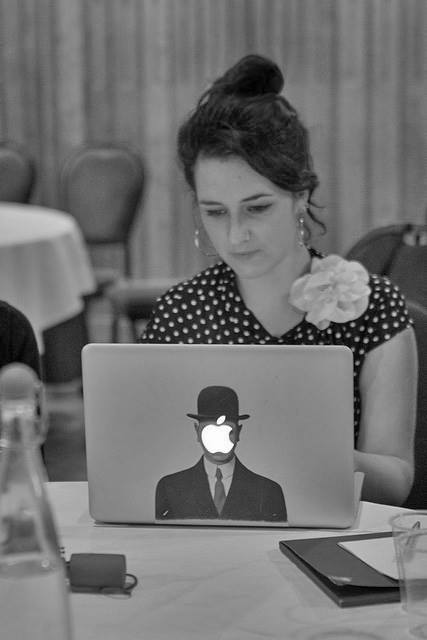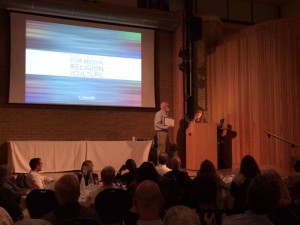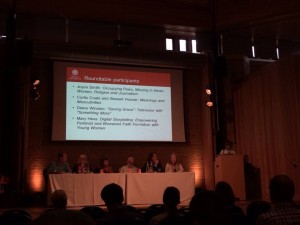Report by Venetia Robertson, University of Sydney
For four days at the beginning of August, I attended the International Society for Media, Religion and Culture (ISMRC) conference within the beautiful grounds of Canterbury Cathedral in England. Hosted by Professor Gordon Lynch of the University of Kent, this conference brought together scholars of media, religion, and culture (sometimes even all three) to analyse these intersections in daily life, in spiritual practice, and throughout history. In concert with the Centre for Media, Religion and Culture (CMRC), run out of the University of Colorado, Boulder, this conference has been held biennially since the mid-1990s, and many of the foundational members continue to attend the event, as well as remaining central contributors to the scholarship of this field.
This year’s conference saw a handing over of the presidential reigns from Professor Stewart M. Hoover of Colorado to his once-student and now Associate Professor at the University of Denver, Lynn Schofield Clark, with whom he has co-authored numerous articles and chapters and co-edited volumes such as Practicing Religion in the Age of the Media: Explorations in Media, Religion and Culture (2002). With a board of directors that includes Professor Mia Lövheim (Uppsala University), Dr Ann Hardy (University of Waikato), and Associate Professor Heidi Campbell (Texas A&M University), to name a few, the ISMRC intentionally incorporates the voices of diverse areas of study (sociology/history/study of religion, theology, journalism, media and communications, new media, digital cultures etc.), from different parts of the globe, and, importantly for this reporter, from female academics, into a broader discussion of the ever-developing relationship between media, religion and culture. At Canterbury, the discussion that was had demonstrated the vastness and richness of such an interdisciplinary venture and yet also the reason why such a conversation must happen.
I heard the following questions more times during the week than the ubiquitous ‘I don’t really have a question… more of a statement’ that haunts every audience response segment: ‘What is religion?’, ‘What is media/mediatisation/mediation?’, and ‘Have you met the other Australian yet?’. In answer to the third question – I did, I believe, meet all the Australian delegates by the end, and there were quite a number I’m proud to say! Down under, represent.
The initial questions about the perplexing categories of religion and media, however, did really seem to need perpetual asking. In a panel on the first day, papers by Ann Hardy on ‘conspirituality’ – the merging of conspiracy theories with New Age beliefs – and by Sofija Drecon, of the University of Arts, Belgrade, on web-based religions like the Church of Google, offered overviews of two exciting studies of religiosity and the Internet, but only had time to prod at the most basic of questions – what does the online conspiracy culture tell us about the internet, and what do online new religious movements tell us about religion? These two papers, I believe, speak to each other in ways that are subtle but have significant broader implications – the internet does foster decidedly ‘alternative’ ways of thinking, from the alt. streams of usenet to some of the darker recesses of reddit or 4chan. The rise of web 2.0 is not solely responsible for communal bonding over fringe responses to epistemological or theological positions; obviously these have been around for as long as we have, mediated or no, but the opportunities for proselystisation and development have hugely increased. This includes not only ‘upgrades’, for example, instead of photocopying 100 fliers advertising conversion to your parody religion or your reptilian conspiracy workshop you can now send 100,000 emails, but also by adapting to those modes of communication, authority, and identity that the internet specialises in and encourages, you are speaking the mother-tongue of the digital natives. In Carole Cusack’s Invented Religions (2010: 132-5) for example, it is noted that movements like the Church of the Flying Spaghetti Monster are so supremely suited to cyberspace because they embody those qualities, listed by Knobel and Lankshear (2006: 209) as humour or irony, intertextuality, and anomalous juxtaposition (like God and Pasta), that appeal to the wired generation and participates in their ‘new literacy’. Our cultural context – techno-saturated, postmodern, secular(ish) – needs flagging, obvious as it may seem, in order for these minor case studies to demonstrate their relevance to the discussion at hand. The audible groan from a colleague when the outdated ‘religion online/online religion’ schema was mentioned (‘that is sooo 2000’), that Christopher Helland himself has openly moved on from, is another reminder that we also need to keep abreast of how these trends are being treated, an updated, in the scholarship.
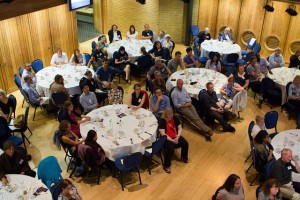
It’s probably obvious at this point that my main interest in this joint area is in digital religion. I particularly enjoyed those papers that were framed around the significant gender, race, and political issues that shape the world we live in, and charted how these identities and identifiers translated into the virtual reality of networked religion. Dr Chris Helland (Dalhousie University) gave an insightful paper on the use of the internet and digital technology by Tibetan Buddhists and how this allows the maintenance of community for a diasporic people. China’s suppression of the Tibetan people extends, unsurprisingly, to technology, recognised as a major tool in effecting a resistance. It is thus a potentially dangerous activity for those living in Tibet to use information technology at all. Nonetheless, while the event of the late Pope Benedict joining Twitter was a source of comedy for many, the Dalai Lama and ex-pat followers have always made an effort to be as connected as possible, and while the internet does provide some spiritual impediment (‘they are worried that the monks are getting too distracted’, Helland comments), it has been deftly incorporated into ritual making, theological learning, and religious identity for Tibetan Buddhists. From Dr Paul Emerson Teusner’s (RMIT) work on audience engagement and pastoral blogs in the Emerging Church, to Associate Professor Alex Boutros’ (Laurier University) study of blogging black identity and religiosity in the Afrosphere, to ritualising postfeminism on Pinterest, as described by Samira Rajabi, there was plenty to keep my mind buzzing! As Stewart Hoover and Nabil Echchaibi, directors of the CMRC and authors of the influential paper ‘The “Third Spaces” of Digital Religion’, were both major contributors to the conference (though Dr Echcaibi was unable to attend), there was a lot of discussion of cyberspace as third space, and as someone who finds this reading of Homi Bhabha’s methodology fruitful for my own studies, I found this to be immensely helpful.
However, so wrapped up am I in my own thesis work that what I failed to anticipate is that ‘media’ is so much more than just new media, and new media is so much more than just the internet. This conference offered the fully gamut of media studies – radio, television, news reports, cinema, magazines, video and computer games, advertising, as well as my favourites: websites, blogs, forums, and memes. As media types diversify it becomes harder to say why we both speaking of them as a whole at all – what does the latest iPrayer app have in common with a ‘healing’ radio broadcast from the 1950s? I have an inkling that there’s something important to be said here about the alleged ‘magic’ of technology and its ongoing role as, quite literally, a mediating force in religious practice. Looking into the eyes of televangelist Pat Robertson as he yells his blessings at you through the screen, one can’t help but wonder how technical he understands this process to be – do prayers travel through the cathode ray tubes of your 1980s set and into your living room? Did their transmission gain clarity and precision with the enhanced qualities of a plasma screen? When Anderson Blanton gave his paper on the wireless preaching of Oral Roberts he emphasised Robert’s wish for listeners to ‘put your hand upon the radio cabinet as a point of contact’, which then dovetailed beautifully with the preceding talk by Larissa Carneiro’s (North Carolina State University) on L. Ron Hubbard’s e-meter, the confluence of haptics, belief, and authenticity was strikingly evident (Blanton is the curator for The Materiality of Prayer Collection, and follows this line of enquiry at Reverberations). Unfortunately, Joonseong Lee’s (California State University) closing presentation for this session on ‘digirituality’, which aimed to elucidate how technology offers a salvific path to the sacred and allows one to deflect the enslaving efforts of commercialism, did not deliver. Maybe, it was the Deleuzian frame of reference that pushed this talk into incomprehensible territory (from the abstract: ‘The term “digirit” is a combination of the words “digital” and “spirit” and is conceptualized from the Deleuzian perspective of Tao. Anus breathing exercise is reinterpreted as a method of practice-oriented spirituality to be digiritual’), or perhaps it was because this paper was written for, though not presented at, a different digital humanities conference in Switzerland (again, evidenced by the unedited pitch in the abstract), either way, I failed to take anything away from this section but those who are curious can follow the hyperlink.
I too found during my own presentation that the level of audience comprehension was less than I had anticipated. At a basic estimation, more than 50% of the papers at this conference dealt only with Islam or Christianity. This in itself is not problematic, there is much to say about these two major faith groups and their interactions with media, nonetheless religion as found within paganism, the occult, the New Age, implicit circumstances, etc. was very rarely discussed. Though I know my subject area is fairly obscure, it seemed that many of my respondents struggled to parse even the spiritual milieu within which my studies are located. Partially this is because many attendees were, as noted, communications experts, not scholars of religion, but additionally the alternative sphere of spirituality, it seems, is still given only marginal attention by the academy. However, with one minute of question time to be shared between four panellists, there was sadly very little opportunity to gauge audience response or elaborate on my topic further. I greatly enjoy question time and found it so frequently at this conference to be an opportunity for vigorous and inspiring discussion and debate – but with only 10 minutes scheduled per session for this, and rarely were more than 5 minutes really allotted, this was always a rushed effort. With widely varied levels of media and religious literacy present, more dedication to theming panels and audience and presenter interaction would likely ensure more optimal engagement with the material. It certainly couldn’t be said, however, that this was not a well organised conference. The staff of the Canterbury Cathedral Lodge were dutiful and polite, and the conference admin team were exceptionally hard-working, helpful, and facilitated fun opportunities for socialising (pub drinks). The picturesque surrounds of the stunning Cathedral itself, so steeped in history, and yet with effective and comfortable conference facilities (wifi was pretty good), made the event extra enjoyable.
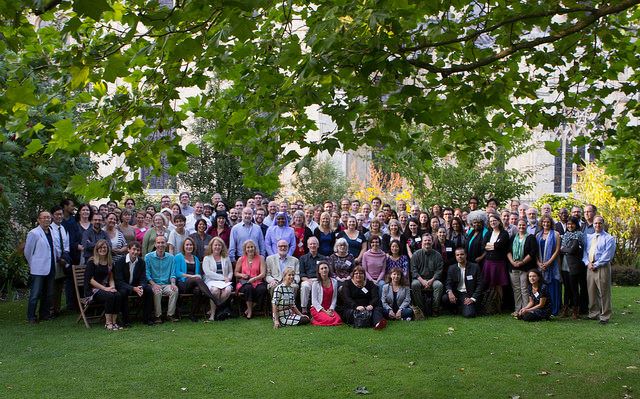
Plenaries came in the shape keynotes and roundtable discussions, all of which were lively and focused. On the first day Jonathan L. Walton provided an effective wake up call to all of us in the audience who were resting, on our laurels and, y’know, from jetlag. In his address ‘Pentecostal and Prosperous: Empowering (and Editing) Marginalized Protestant Bodies’, Walton took us, in what I imagine is his trademark lecturing and preaching style (being Professor of Religion and Society and the Pusey Minister at Harvard University) on a journey – we giggled at his witty analysis of the kitschy tactics and aesthetics of African-American prosperity preachers like Pastor Carlton Pearson, his brash 90s outfits and manufactured spontaneity, and then teared up as Walton passionately retold the little-known 1921 race riot of Tulsa, Oklahoma during which the prosperous district of Greenwood known as ‘Black Wall Street’ became a site of mass destruction, with disgruntled white folk turning black families and business owners onto the streets, attacking, looting, shooting, even firebombing them from aeroplanes, within 16 hours razing the town to the ground. So under-reported and poorly regulated was the aftermath that we still don’t know if the numbers of dead African-Americans were closer to 30 or 300. Tulsa would go on to be a centre for black Pentecostalism, and importantly so, jettisoning the black church into the profitable market of televangelism of which Pastor Pearson’s once-booming Higher Dimension Family Church and annual televised Azusa conferences, both in Tulsa, are perfect examples. While it’s easy to roll your eyes at the razzle dazzle of mega-church theatrics, Walton’s sobering reminder of the history of the racial politics of wealth and worth in America shed invaluable light on this ongoing tension and its effects for media and religion.
There was some criticism that this conference, particularly in its choice of keynote speakers, was a tad Americo-centric. Professor Kathryn Lofton’s thoroughly entertaining and energetic lecture on the cult of Oprah, for example, apparently went over the heads of those international audience members not as saturated in the celebrity culture of the USA as are, say, we Australians. Perhaps guilty of subconsciously indulging the implicit notion that America = the universal example, my favourite panel was delivered entirely by Americans, three students and a professor from Northwestern University, on explicitly American topics. Myev Rees’ analysis of ‘mommy martyrdom’ in the life and times of mega-mater Michelle Duggar and characters like Bella Swan of Twilight, Stephanie Brehm’s intriguing look at the religiosity of Stephen Colbert on and off camera, Hannah Scheidt’s comparative study of theistic and atheistic billboards and advertising campaigns in the US, and Professor Sarah Macfarland Taylor’s paper on ‘Green hip hop’ and the politics of urban environmentalism, were extremely well put-together, informative, and important offerings, relished by their listeners.
Feedback on the overall experience of the conference and specific areas that needed attention was welcomed by the ISMRC organisers, and on the fourth day a workshop was held in order to gauge participants’ responses. Though I think some of the younger and less experienced delegates would have liked this segment to have included some ‘workshopping’ of methods, techniques, and debates relevant to the practical aspect of being a media and religion scholar, e. g. how to make this avenue enticing to departments and universities, how to appeal to sources of funding for new centres or research projects, how to undertake fieldwork efficiently and effectively, how to extend the relevance of our work beyond the paywall, the institution, the elitism of the academy and bring it to ‘the people’, the media, the government and so forth. Instead the focus was more on how to improve the conference itself, still a noble gesture, and garnered the comments and suggestions one can usually expect – more diversity while at the same time respecting a variety of levels of comprehension, more voices from non-white countries and contexts, more examples from outside the mainstream etc. The next meeting of the ISMRC, to be held in Seoul, will surely provide some redress. While I’ve complained that question time was often too short, moments like this were important reminders that conversation is central and valued for the progression of our work as a body of scholars. Conferences may offer many opportunities, but more than anything it is the fostering of an interdisciplinary, international dialogue that keeps us coming back. I had several people come up to me and say ‘I really enjoyed your questions today’, and maybe I wish they’d said ‘your riveting and original research, may I offer you a job/scholarship/standing ovation’, nonetheless, feeling a part of the conversation is a wonderful reward in itself. Thanks to the ISMRC for having me, and I look forward to doing this again in Korea in 2016!

